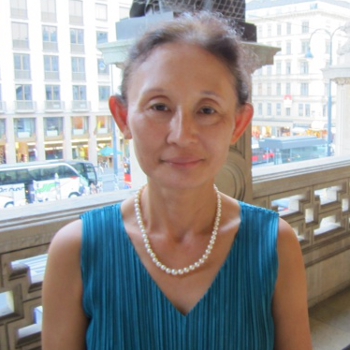When Tyrolean Festival Erl named their second Ring Cycle of the summer of 2014 as the “24-hour Ring”, they meant it literally. While Das Rheingold, as originally conceived as a prelude (Vorabend) to the Ring, was presented on Friday evening, the three operas that compose the “body” of the Ring were performed over a 24-hour period; Die Walküre began at 5pm on Saturday and ended at 9:30pm; Siegfried began at 11pm and ended at 4:30am on Sunday. After a brief rest, Götterdämmerung began at 11am to end a little before 5pm. So, a 24-hour Ring! While many people skipped Siegfried, many of us attended all four operas over the weekend. While one may not wish to repeat the experience even if the Ring is ever offered over a single weekend again, the sense of intimacy and camaraderie that developed as we mobbed the canteen for coffee and roamed around the festival ground half asleep during the breaks is an unforgettable and truly a unique souvenir.
Vocally Die Walkure was perhaps not very strong, but the orchestra playing remained at a very high level, and the simple production offered a great deal of interesting details. Act I plays out in a present day kitchen, with Hunding coming home as a motorbike gang member, complete with leather boots and a helmet. He is a typical modern day husband, going out with boys on his motorbike, coming home to demand dinner from his wife. He callously channel surfs a small flat screen TV during dinner while Siegmund, wounded in the leg and walking with some difficulty, relates the sad story of his life.
As with the rest of the Ring, a great deal of the mood of the opera is communicated by lighting the screen behind the orchestra in various colours. For instance, as Siegmund begins “Winterstürme”, the backlighting changes to warm red. As the twins embrace at the end of Act I, a large piece of white cloth descends upon them as if a canopy over a wedding bed.
Act II mountain tops are illustrated by a number of metal cases of varying sizes and heights on stage. As Wotan enters, he hands a rifle rather than a spear to Brunnhilde, who sports a pair of boots, a riding hat and a long coat. Fricka is dressed in red leather pants, with tall boots and a black leather cap, while Wotan sports a leather coat. Brünnhilde and her sisters are dressed in short silvery dresses and tights. The scene between Wotan and Brünnhilde is carried out as they moved around the sparse stage with long beams that are usually lined on either side of the stage laying flat to serve as benches. As the act ends with death of Siegmund and then Hunding, all six principals are seen, standing still and alone with their individual fates; it is a striking tableau as the music plays the furious turmoil of the battle and its aftermath.
The best scene of the opera, however, comes at the beginning of Act III. Rather than riding in on horses, the valkyries enter on bicycles, circling the stage many times as they sing their battle calls. They observe as Wotan comes in to chastise and punish Brünnhilde, who carries in Sieglinde on a large wooden horse. The final scene was somewhat disappointing as there was no fire surrounding Brünnhilde’s rock – apparently there are usually torches carried by extras, but for some reason it was omitted in this performance.
The Wälsung twins were sung by a youthful pair: Andrew Sritheran made a brief appearance in the Met's Die Walkure a few years ago when he covered mid-performance for Simon O’Neill. He has an attractive voice and sincere demeanour, perfect for the role. While his Sieglinde, Marianna Szivkova, had too much vibrato in her high notes, she too is an appealing singer. Their duet at the end of Act I was electrifying. Raphael Sigling’s Hunding was adequate but did not make a great impression.
Vladimir Baykov's Wotan is more of a baritone than bass-baritone. He negotiated Wotan’s monologue extremely well, and the sometimes tedious narration was actually quite lively and interesting as he used his voice effectively to provide various colours and nuances. His farewell to Brünnhilde was heartbreaking. His voice – deep and penetrating – can rise up to high range with seeming ease. It is rare to hear a Wotan with good flexibility throughout his range.
Brünnhilde was sung by German soprano Bettine Kampp who has an impressive resumé of dramatic Verdian, Straussian and Wagnerian roles. However, she strikes one as more suited to lighter lyric parts as her voice lacks the depth and weight of a helden-soprano. The voice is not particularly distinctive either, although she possess a good middle voice, flexible and warm. Her high notes were less impressive, tending to be thin and failing to bloom above the stave. She acted the part of a sophisticated but naïve young goddess very well.
Hermine Haselböck reprised her Fricka, but her voice lacks the weight to carry Wagner’s music. While she is a statuesque woman, she also seems more suited to a more Italian – or at least lighter – repertoire. All the valkyries were suitably athletic and sang impressively both separately and together.
The performance benefited in general from the presence of the orchestra behind a scrim on the back of the stage, so the singers were never drowned out and thus could often sing softly and lyrically. The beauty and dynamism of the music of Die Walkure was overwhelming as the six young women in red billowing dresses played the last notes on stage as Brünnhilde slips into sleep.




